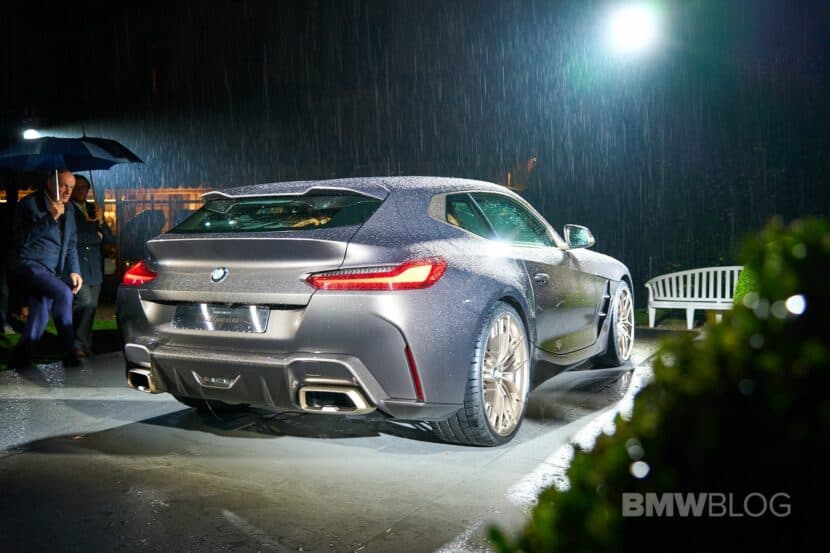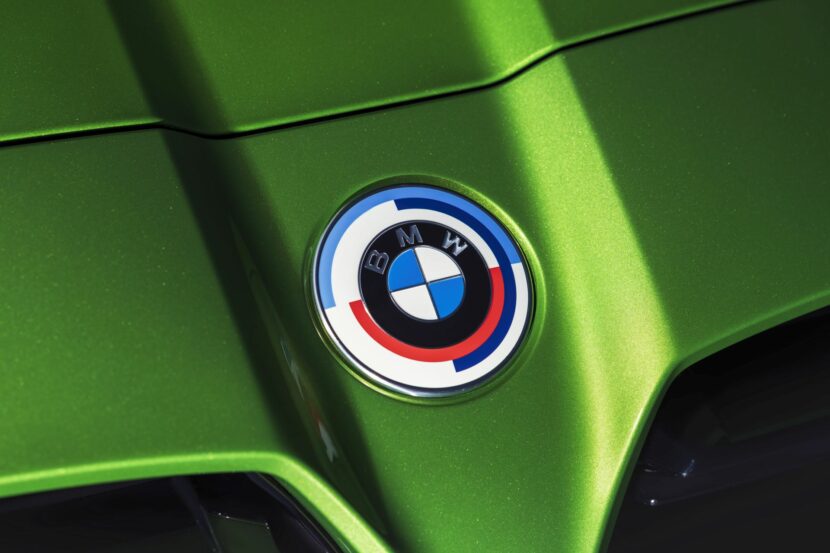Ladies and Gentlemen!
Before we begin, allow me to express some initial thoughts. There are still numerous challenges for our business development. Repeatedly, the Chinese experienced turbulent days on the mainland stock markets. The situation in BRIKT markets such as Russia and Brazil also remains tense. Furthermore, there are numerous economic and political uncertainties that present a risk to the global economy and also affect the automotive industry.
Also, our industry must reduce carbon emissions further in line with regulatory requirements, which means a further large financial investment. Be assured, at the BMW Group, our actions will always be guided by a focus on the long-term. And it is always our goal to set the company on the right course for the future. That’s why we are constantly adapting.
How do we plan to secure our future success? What do our customers need and desire? With which product innovations and services can we differentiate ourselves from the competition? All of these questions are being reviewed in our current strategy process.
Let’s move on to the first main topic.
How did the automobile markets and our company sales develop in the major world regions in the first half of 2015?
First: Europe. The trend in new registrations is generally positive. Markets such as Spain, Italy, Portugal and Ireland even experienced strong growth in the first six months. At approximately 44 percent of all vehicles sold, Europe still remains our largest sales region. With 488,000 vehicles delivered, the BMW Group grew 9.5 percent in Europe in the first half of the year.
Second: The Americas. In the Americas, our sales also climbed by 9.5 percent. In the U.S., we delivered over 242,300 cars and BMW Group sales grew 9.6%, which was twice the rate of the total U.S. car market. The generally positive mood among consumers in the United States is reflected in the automotive market. At the same time, competition is becoming even more intense. Many OEMs are currently transferring volume to the US, with a corresponding impact on prices.
Third: Asia and China. In Asia, we delivered around 337,000 vehicles, an increase of 4.4 percent year-on-year. In China, however, the development towards normalization of growth has accelerated. As the development is picking up pace, it also affects the exceptionally high growth rates in vehicle sales of the past few years. We always emphasized that this development could be expected and we anticipated this situation in our planning. In the first six months of 2015, we sold over 230,700 cars in China, up 2.3 percent from the previous year’s six-month figure. China will remain an important market for us with great potential. We are stepping up the number of locally produced BMW models in order to tailor our offering even better to the demands of Chinese customers.
Fourth: BRIKT countries. In some emerging countries there is still a strong downward trend in new car sales. This is the case with Brazil and Russia. However, BMW Group’s sales figures in Brazil have risen for the past three years. In Russia they have declined.
All this shows that the development in the global automotive markets remains uneven. Clearly, this means there continue to be opportunities, but there are also challenges.
And now we come to the second main topic.
We continue to follow a strategy of balanced global sales. This allows us to offset temporary market fluctuations. For this – more than ever – we need a globally balanced and locally strong production network. Our global production network currently consists of 30 production sites in 14 countries – to ensure that our production will continue to be distributed evenly among the major world regions: Europe with sites in Germany, Great Britain and Austria as well as contract production in Austria and the Netherlands. Asia with our plants in Shenyang and Tiexi in China as well as our plant in India. And the Americas with our U.S. site in Spartanburg and our new plant in Brazil.
With the expansion of our Spartanburg site and our new plant in Mexico, we are strengthening and expanding our production base in North America. This capacity increase is the prerequisite of future growth as well as a way to improve our natural hedging.
Spartanburg is receiving an investment of one billion U.S. dollars between 2014 and 2016. By the end of 2016, we will be able to produce over 450,000 vehicles per year at the site. At that point, Spartanburg will be the largest plant in our global production network. The expansion is also a response to the continuing trend towards SUVs.
At present, the X lineup accounts for almost one in three BMWs sold. With new models such as the X7 we are going to expand our offering “made in Spartanburg”.
Our new plant in Mexico is the perfect addition to the U.S. facility. It is scheduled to start production in 2019 with a planned capacity of 150,000 units annually. In San Luis Potosí, we are going to invest one billion U.S. dollars over the next few years as well. In doing so, we are stepping up our presence in the NAFTA region, and Mexico with its numerous bilateral and regional free trade agreements is a location with a particularly promising future.
According to forecasts, the global automotive market is expected to grow in the coming years – from about 80 million new registrations in 2014 to more than 90 to almost 100 million units in 2020. We want to participate in this future growth and our highly flexible global production network provides the foundation for this.
Now to our third main topic.
Our strong and attractive premium brands are what makes our cars so appealing to customers all around the world. Today, the positioning of the BMW brand is broader and more diversified than ever before. The portfolio ranges from BMW i to the BMW core brand and BMW M. Our customers demand both sustainable and high-performance models.
In the first six months of 2015, we sold 12,500 electrically powered BMW i3 and i8 cars; in other words, sales more than doubled compared to the prior year period. In the first half of the year, we also delivered over 30,500 BMW M and M Performance models to customers.
In total, we delivered over 1.099 million BMW Group vehicles to customers in the first half of 2015. Never before has the BMW Group sold so many cars in the first six months of a year. The BMW and MINI brands achieved new all-time highs. Rolls-Royce posted the second best first six-month sales to date. BMW remains the number one in the premium segment. BMW Motorrad achieved the best first half of a year on record, with more than 78,400 units sold. For our core brand BMW, 2015 is under the banner of the new BMW 7 Series.
The positive feedback of the global media attests to the groundbreaking character of the sixth generation of our 7 Series as well as to the innovative strength of the BMW Group. The response from the media underscores the supreme balance of perfect driving experience, connectivity and comfort. This perfect balance is what we consider contemporary luxury. Besides the new BMW 7 Series, our customers have a wide choice of attractive new models.
The all-new BMW 2 Series Gran Tourer went on sale in June. It is the first BMW in the premium compact class with up to seven seats. The BMW 3 Series has been the heart of the BMW brand for 40 years now. The model update of the BMW 3 Series – consisting of the Sedan, Touring and M3 – came out in late July. Fall will see the market launch of the new BMW X1 – with a head-up display and additional driver assistance systems. This second generation of the X1 is based on our front-wheel drive architecture.
Another launch in fall will be the highly efficient BMW X5 xDrive40e. As a first, this Sports Activity Vehicle combines an all-wheel drive with a plug-in hybrid powertrain. It is the first in a forthcoming wide range of plug-in hybrids in BMW’s model series.
The MINI brand currently has a young portfolio. Customers love the MINI 3-door and 5-door variants. Sales doubled in the first six months of 2015, compared with the previous year. Only a few weeks ago, we presented the new MINI Clubman to the media. With its strong, unique character, it is one of the models that will define MINI in the future.
Overall, BMW and MINI are launching 15 new models and model revisions this year – almost as many as in 2014, our record launch year. The high demand for our brands is and will remain the cornerstone of our success.
And now to the fourth main point:
Our key financials for the first six months of the current business year are as follows: For the first time, we posted earnings before interest and tax of over 5 billion euros in the first six months of the year. The pre-tax Group result reached more than 4.8 billion euros, slightly above the level of the prior year period. The Group net profit in the period under report stood at 3.2 billion euros. At 8.9 percent, the EBIT margin in the Automotive segment was within the anticipated profitability range. Therefore we are on track to achieve our targets for the full year. More specifically: A solid increase in Group sales. A solid increase in pre-tax Group result. An EBIT margin in the Automotive segment in the target range of 8 to 10 percent.
Our forecast is based on the assumption that overall market and political conditions in our business environment will not deteriorate. Dr. Eichiner will talk more about our forecast in a moment.
The decisive question that guides our actions is: What kind of company do we want to be in the future and how do we set the right course? In fall 2007, we adopted our Strategy Number ONE which guides us up to 2020. Since then, many trends have intensified or accelerated dramatically.
Above all, digitalization and the associated technical possibilities, are set to change the automobile and its fundamental role in our society. The new BMW 7 Series with its cutting-edge innovations is the perfect example of this. Digitalization will also change the whole process of industrialization in our sector. The car could be viewed as the largest mobile data storage and will be an essential element of the “Internet of Things”. Following the technological change towards sustainable mobility, this is the next radical change for our industry.
We regard new technological trends above all as new opportunities – for the car, our industry and customers. Based on this, we are currently conducting a comprehensive update of our strategy. At this stage it is still too early to go into further detail. For us, “speed” is important, but it is more important to look at possible trends and carefully analyze them both from a qualitative and quantitative point of view. The goal is to align our strategy with future challenges up to the year 2025 and beyond.
With ConnectedDrive, Future Retail, DriveNow and digital services, we offer customers a wide range of services and connectivity. For a long time now, we have been far more than just a vehicle manufacturer.
The acquisition of Nokia’s mapping and location services business, HERE, by the three German premium car companies is a further strategic step. The acquisition is intended to secure the long term availability of HERE’s products and services as an open, independent and value creating platform for cloud-based maps and other mobility services. This platform is and will be accessible to all customers from the automotive industry and other sectors.
HERE will play a key role in the digital revolution of mobility, combining high definition maps and data from vehicles to make travel safer and easier for everyone.
HERE is laying the foundations for the next generation of mobility and location based services. For the automotive industry this is the basis for new assistance systems and, ultimately, fully autonomous driving.
As you can see: We are taking strategic decisions with a long-term perspective. We are aligning our business model to the complex challenges of today and tomorrow. We also continue to invest in the company – in our products and brands, new services and our production sites worldwide.
We will continue to adapt the BMW Group to meet future challenges. And our company will further strengthen its position as a provider of individual mobility in the premium segment. In this area, we also intend to be the leader.
Thank you for your attention!






































































